Pasta Recipes
Tonnarelli Pasta Recipe: Create a Roman-Inspired Meal at Home

Tonnarelli pasta, a Roman delicacy with its distinct square shape and rich texture, offers an authentic taste of Italy. This pasta, thicker than spaghetti but equally versatile, pairs beautifully with traditional Roman sauces like Cacio e Pepe, Carbonara, and Amatriciana. In this article, we guide you through creating a perfect Tonnarelli pasta dish at home, using fresh ingredients and time-honored techniques. Let’s dive into the process of making an unforgettable Roman-inspired meal.
What Is Tonnarelli Pasta?
Tonnarelli is a type of fresh egg pasta, often described as the Roman version of spaghetti alla chitarra, a similar pasta from the Abruzzo region. The main difference lies in the shape and method of preparation. Tonnarelli is cut into thicker, square strands using a special tool known as a chitarra, which gives the pasta its signature look. Its thicker texture allows it to hold sauces better, making it a favorite for hearty Roman dishes.
Ingredients for Homemade Tonnarelli Pasta
To make authentic Tonnarelli pasta from scratch, you’ll need the following ingredients:
- 400g semolina flour
- 4 large eggs
- A pinch of salt
- A splash of water (if necessary)
These simple ingredients create the base for this rich and satisfying pasta. It’s the quality of the ingredients and the technique that makes all the difference in achieving a true Roman pasta experience.
Step-by-Step Guide to Making Tonnarelli Pasta
1. Prepare the Dough
Start by creating a well with the semolina flour on a clean work surface. Crack the eggs into the center of the well and add a pinch of salt. Using a fork, slowly mix the eggs into the flour, incorporating it gradually until a dough starts to form.
Knead the dough by hand for about 10 minutes until it becomes smooth and elastic. If the dough feels too dry, add a little water, a teaspoon at a time, to help it come together. Wrap the dough in plastic wrap and let it rest for at least 30 minutes.
2. Roll Out the Dough
Once rested, divide the dough into smaller portions for easier handling. Using a rolling pin or a pasta machine, roll the dough out into thin sheets. You’re aiming for a thickness of about 2mm. If you’re using a pasta machine, gradually move through the settings until you reach the desired thickness.
3. Cut the Tonnarelli
Now, the pasta needs to be cut into its characteristic square strands. If you have a chitarra, place the rolled dough on top and press down with a rolling pin to cut the pasta. Alternatively, you can use a knife to cut the dough into thin, even strips (about 3mm wide). Dust the cut pasta lightly with semolina to prevent sticking and set it aside.
4. Cooking the Tonnarelli
Bring a large pot of salted water to a rolling boil. Add the fresh tonnarelli pasta and cook for 3-4 minutes, or until the pasta floats to the surface and achieves a tender bite. Fresh pasta cooks much faster than dried, so be sure not to overcook it.
Classic Roman Sauces for Tonnarelli Pasta
Tonnarelli pasta is a versatile base for several iconic Roman sauces. Here are three classic pairings that showcase the pasta’s ability to absorb and cling to rich, flavorful sauces.
Tonnarelli Cacio e Pepe
Cacio e Pepe is a deceptively simple yet utterly delicious dish that translates to “cheese and pepper.” The richness of the cheese combined with the heat of freshly cracked black pepper creates a balanced, creamy sauce that complements the texture of tonnarelli.
Ingredients:
- 200g Pecorino Romano cheese, finely grated
- Freshly cracked black pepper, to taste
- 2 ladles of pasta water
Instructions:
- In a large bowl, mix the grated Pecorino Romano with a ladle of pasta water to create a smooth, creamy mixture.
- Add the cooked tonnarelli to the bowl and toss vigorously, adding more pasta water as needed to emulsify the sauce.
- Season with freshly cracked black pepper, ensuring an even coating of cheese and pepper on the pasta strands.
Tonnarelli alla Carbonara
Carbonara is another Roman classic, known for its creamy sauce made from eggs, Pecorino Romano, and guanciale (cured pork cheek). The heat from the freshly cooked pasta helps create the luxurious sauce without curdling the eggs.
Ingredients:
- 100g guanciale, diced
- 2 large eggs
- 50g Pecorino Romano cheese, grated
- Freshly ground black pepper
Instructions:
- In a large skillet, cook the guanciale over medium heat until crispy. Remove from heat and set aside.
- In a separate bowl, whisk the eggs and cheese together.
- Drain the tonnarelli, reserving some pasta water, and quickly toss the hot pasta with the guanciale. Add the egg mixture and stir vigorously to coat the pasta, using pasta water as needed to achieve a creamy consistency.
- Serve immediately with additional Pecorino and black pepper.
Tonnarelli all’Amatriciana
Amatriciana is a robust, tomato-based sauce originating from the town of Amatrice. It combines the richness of guanciale with the tang of tomatoes and the sharpness of Pecorino Romano.
Ingredients:
- 100g guanciale, diced
- 400g canned San Marzano tomatoes
- 50g Pecorino Romano cheese, grated
- Red pepper flakes, to taste
Instructions:
- Sauté the guanciale in a large skillet until it becomes crispy. Remove and set aside.
- Add the tomatoes and red pepper flakes to the skillet and simmer for 10 minutes, stirring occasionally.
- Add the cooked tonnarelli to the sauce and toss well, ensuring each strand is coated.
- Top with grated Pecorino Romano and the crispy guanciale before serving.
Tips for the Perfect Tonnarelli Pasta
- Use high-quality semolina flour: The texture of the pasta is essential, and semolina flour gives tonnarelli its characteristic chewiness.
- Don’t overcook the pasta: Fresh pasta cooks much faster than dried, so keep an eye on it to maintain the perfect al dente bite.
- Reserve pasta water: The starch from the pasta water is key to creating smooth, emulsified sauces.
- Grate cheese finely: To avoid clumping in sauces like Cacio e Pepe or Carbonara, make sure your cheese is grated as finely as possible.
Serving Suggestions
Tonnarelli pasta is hearty and pairs well with simple side dishes. Consider serving your meal with a fresh insalata mista (mixed salad) and crusty Italian bread. A light red wine like Chianti or a white such as Verdicchio also complements the bold flavors of these Roman dishes.
Read More : Low Calorie Pasta Recipe: Healthy and Delicious
Faq’s
1. What is Tonnarelli pasta?
Tonnarelli is a traditional Italian pasta originating from Rome. It is similar to spaghetti but is distinctively square in shape, thanks to the way it is cut. Its rough texture makes it ideal for holding sauces, making it perfect for pairing with classic Roman dishes like Cacio e Pepe and Carbonara.
2. What is the difference between Tonnarelli and spaghetti?
The main difference lies in the shape and texture. Tonnarelli has a square cross-section, whereas spaghetti is round. Tonnarelli is also slightly thicker, which gives it a chewier texture that absorbs sauces better.
3. Can I make Tonnarelli without a pasta machine?
Yes, you can make Tonnarelli by hand. After rolling out the dough with a rolling pin, use a sharp knife to cut the dough into thin strips, about 2-3mm wide, to create the characteristic square shape. However, using a pasta machine ensures more consistent thickness and size.
4. What kind of flour should I use to make Tonnarelli?
Traditionally, semolina flour is used for Tonnarelli because it gives the pasta a firmer texture. However, you can also use double zero (00) flour or a combination of both, depending on your preference. Semolina flour is coarser and produces a more authentic, textured pasta.
5. How long should I cook fresh Tonnarelli pasta?
Fresh Tonnarelli cooks much faster than dried pasta. Typically, it only takes about 2-3 minutes in boiling salted water. Keep an eye on it, as overcooking fresh pasta can cause it to lose its texture.
6. Can I store homemade Tonnarelli pasta?
Yes, you can store fresh Tonnarelli. After cutting the pasta, you can dry it on a pasta rack for a few hours, then store it in an airtight container for up to two days in the refrigerator. Alternatively, you can freeze it for up to a month. Just make sure to freeze it in small nests so it doesn’t clump together.
7. What sauces pair best with Tonnarelli pasta?
Tonnarelli pairs exceptionally well with traditional Roman sauces, such as:
- Cacio e Pepe (cheese and black pepper)
- Carbonara (guanciale, eggs, and Pecorino cheese)
- Amatriciana (guanciale, tomatoes, and Pecorino cheese)
The thick texture of Tonnarelli is perfect for holding onto these rich sauces.
8. Is Tonnarelli gluten-free?
Tonnarelli is traditionally made with semolina flour, which contains gluten. However, you can make gluten-free Tonnarelli using a gluten-free flour blend designed for pasta. Keep in mind that the texture may differ slightly, but you can still enjoy the flavors of this classic pasta.
9. Can I use Tonnarelli in other pasta dishes?
Absolutely! Tonnarelli is a versatile pasta that works well in a variety of dishes beyond Roman classics. You can use it in hearty tomato-based sauces, creamy mushroom sauces, or even seafood dishes. Its robust texture makes it adaptable to a wide range of recipes.
10. What is the best way to serve Tonnarelli?
Tonnarelli is best served immediately after cooking, tossed in your sauce of choice. To enhance the flavors, reserve some of the pasta cooking water to mix with the sauce. This adds creaminess and helps the sauce adhere to the pasta more effectively.
Conclusion :
Pasta Recipes
test
test
Pasta Recipes
Creamy Mushroom Pasta Recipes That Are Irresistible
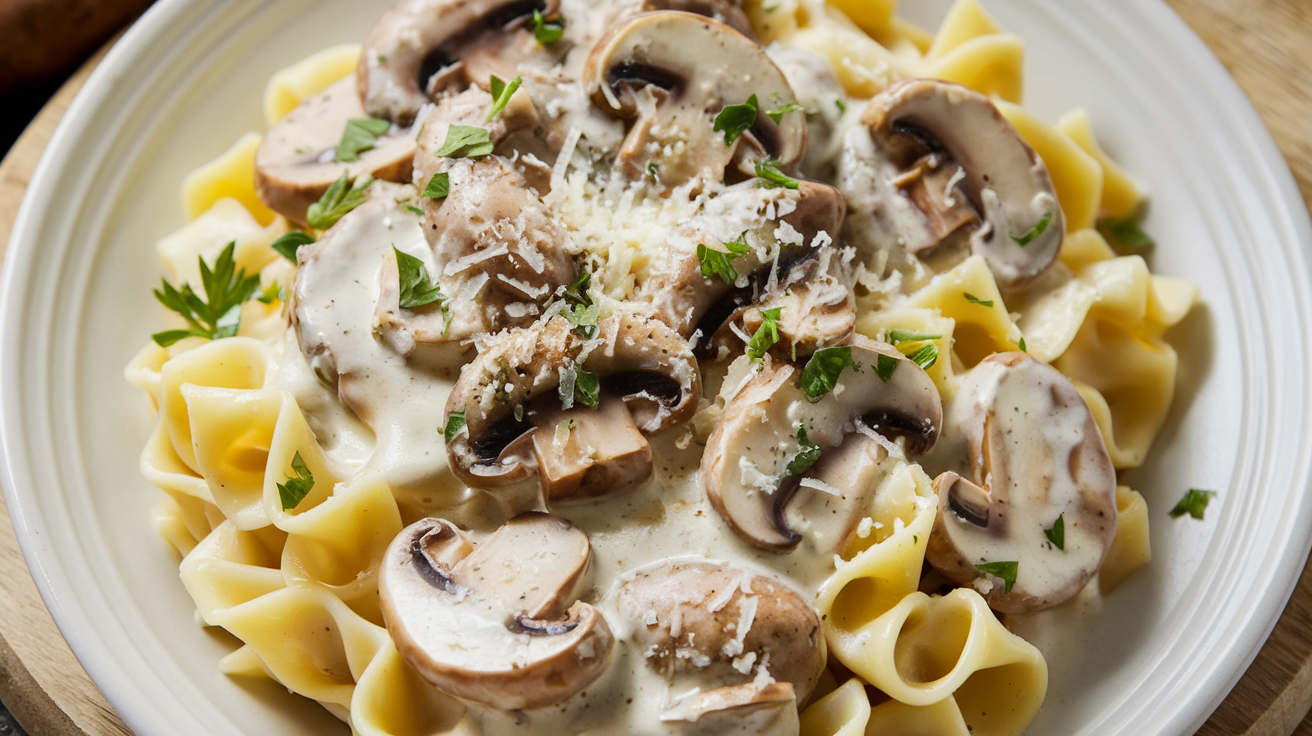
Creamy Mushroom Pasta Recipes That Are Irresistible
Creamy mushroom pasta is a comforting dish that combines rich, earthy flavors with the silkiness of a cream-based sauce. Whether you’re a seasoned cook or just beginning your culinary journey, creamy mushroom pasta is an easy yet indulgent dish that brings a touch of gourmet dining to your home. This article will introduce you to some delicious creamy mushroom pasta recipes that are irresistible, versatile, and perfect for any occasion. So, grab your ingredients and prepare to make a meal that everyone will love!
The Allure of Creamy Mushroom Pasta
Mushrooms are not only packed with nutrients, but they also offer a unique, savory flavor that elevates a dish. When combined with a creamy sauce, the umami notes from the mushrooms blend seamlessly with the richness of cream, butter, and cheese, creating an irresistible flavor profile. Creamy mushroom pasta is versatile and can be tailored to different tastes by adding ingredients like spinach, garlic, or Parmesan. It’s a satisfying dish, ideal for cozy nights in or entertaining guests.
Let’s dive into some delightful creamy mushroom pasta recipes that are sure to impress your family and friends.
Classic Creamy Mushroom Pasta
If you’re looking for a traditional take on creamy mushroom pasta, this classic recipe is the way to go. It’s simple, flavorful, and made with just a few key ingredients.
Ingredients:
- 300g pasta (penne, fettuccine, or spaghetti)
- 250g mushrooms (button, cremini, or a mix of your favorite)
- 2 tbsp olive oil
- 1 tbsp butter
- 2 cloves garlic, minced
- 200ml heavy cream
- 50g Parmesan cheese, grated
- Salt and pepper to taste
- Fresh parsley for garnish
Instructions:
- Cook the pasta in salted boiling water until al dente. Drain and set aside.
- In a large pan, heat olive oil and butter over medium heat. Add the minced garlic and sauté for a minute until fragrant.
- Add the sliced mushrooms to the pan and cook until they become soft and golden brown, about 5-7 minutes.
- Stir in the heavy cream, bring to a gentle simmer, and cook for 3-5 minutes until the sauce thickens.
- Add the Parmesan cheese and stir until melted and combined.
- Season with salt and pepper to taste.
- Toss the cooked pasta into the sauce, ensuring it is fully coated.
- Garnish with fresh parsley and serve hot.
This classic creamy mushroom pasta is incredibly comforting and easy to make. It’s the perfect dish when you’re craving something quick but luxurious.
Creamy Garlic Mushroom Pasta with Spinach
Adding spinach to creamy mushroom pasta not only adds a pop of color but also brings additional nutrients to the dish. The combination of garlic, spinach, and mushrooms creates a well-balanced and hearty meal.
Ingredients:
- 300g fettuccine
- 200g mushrooms, sliced
- 2 cups fresh spinach
- 3 cloves garlic, minced
- 2 tbsp olive oil
- 1 cup heavy cream
- 1/2 cup vegetable broth
- 50g Parmesan cheese, grated
- Salt and pepper to taste
Instructions:
- Cook the fettuccine according to package instructions, drain, and set aside.
- In a large pan, heat the olive oil over medium heat. Add the minced garlic and sauté until golden.
- Add the sliced mushrooms and cook until softened and browned, about 5 minutes.
- Stir in the spinach and cook until wilted.
- Pour in the vegetable broth and heavy cream, bringing the mixture to a simmer.
- Add the Parmesan cheese and stir until melted. Let the sauce thicken for about 2-3 minutes.
- Season with salt and pepper to taste.
- Combine the pasta with the creamy mushroom spinach sauce and toss until well-coated.
- Serve with a sprinkle of Parmesan and enjoy!
This garlic-infused creamy mushroom pasta recipe is perfect for a satisfying dinner, combining the creaminess of the sauce with the fresh taste of spinach.
Vegan Creamy Mushroom Pasta
For those who follow a plant-based diet, creamy mushroom pasta can still be enjoyed! This vegan version is made with dairy-free cream and packed with rich flavors. It’s the ultimate comfort food, without any animal products.
Ingredients:
- 300g pasta (your choice)
- 250g mushrooms (cremini or portobello)
- 2 tbsp olive oil
- 1 onion, finely chopped
- 2 cloves garlic, minced
- 1 cup coconut cream or cashew cream
- 1/4 cup nutritional yeast
- 1 tbsp lemon juice
- Salt and pepper to taste
- Fresh basil for garnish
Instructions:
- Cook the pasta as per package directions, drain, and set aside.
- In a large skillet, heat the olive oil over medium heat and sauté the chopped onions and garlic until soft and translucent.
- Add the mushrooms and cook until golden brown and tender.
- Stir in the coconut cream or cashew cream and bring the mixture to a simmer.
- Add the nutritional yeast, lemon juice, salt, and pepper to the sauce.
- Let the sauce thicken slightly, then toss the cooked pasta into the pan and mix well.
- Garnish with fresh basil and serve.
This vegan creamy mushroom pasta is indulgent and flavorful, proving that you don’t need dairy to create a rich, creamy sauce.
Creamy Mushroom Pasta with Truffle Oil
If you’re looking to elevate your creamy mushroom pasta, truffle oil is the secret ingredient. It adds a luxurious, earthy aroma and takes the dish to gourmet levels.
Ingredients:
- 300g tagliatelle
- 200g mixed mushrooms (shiitake, oyster, and button)
- 2 tbsp olive oil
- 1 shallot, minced
- 1/2 cup heavy cream
- 1 tbsp truffle oil
- 50g Parmesan cheese, grated
- Salt and pepper to taste
- Fresh thyme for garnish
Instructions:
- Cook the tagliatelle in salted water until al dente. Drain and set aside.
- In a large pan, heat the olive oil over medium heat and sauté the minced shallot until softened.
- Add the mixed mushrooms and cook for about 5-7 minutes until they become golden and tender.
- Stir in the heavy cream and allow the sauce to simmer and thicken.
- Remove the pan from the heat and drizzle in the truffle oil. Stir until combined.
- Toss the pasta in the sauce, ensuring each strand is coated.
- Top with Parmesan cheese and fresh thyme before serving.
This creamy mushroom pasta recipe with truffle oil is perfect for a special occasion or a date night at home. The truffle oil enhances the earthy flavor of the mushrooms and adds a touch of luxury to this simple dish.
Frequently Asked Questions
What mushrooms are best for creamy mushroom pasta?
The best mushrooms for creamy mushroom pasta are cremini, button, shiitake, and portobello. You can use a combination of these for added flavor and texture.
Can I make creamy mushroom pasta ahead of time?
Yes, you can make creamy mushroom pasta ahead of time. Prepare the sauce and pasta separately, and combine them just before serving. Reheat the sauce gently on the stove before mixing it with the pasta.
How do I store leftover creamy mushroom pasta?
Leftover creamy mushroom pasta can be stored in an airtight container in the refrigerator for up to three days. When reheating, add a splash of cream or milk to revive the sauce’s texture.
Is creamy mushroom pasta gluten-free?
The pasta itself determines whether the dish is gluten-free. Simply swap out regular pasta for gluten-free pasta, and the rest of the recipe can remain unchanged.
Can I make creamy mushroom pasta without cream?
Yes! You can substitute heavy cream with cashew cream, coconut milk, or even dairy-free alternatives like almond cream for a lighter version of the dish.
What can I serve with creamy mushroom pasta?
Creamy mushroom pasta pairs well with garlic bread, a fresh green salad, or roasted vegetables. These sides help balance out the richness of the pasta.
Conclusion
Creamy mushroom pasta is an incredibly versatile dish that can be adjusted to suit various dietary preferences and flavor profiles. Whether you prefer a classic recipe, a plant-based alternative, or want to add a gourmet touch with truffle oil, these recipes are guaranteed to be a hit. The rich, creamy sauce combined with the earthy flavor of mushrooms creates a pasta dish that is both comforting and indulgent.
For more exciting recipe ideas, visit Foodies Den!
Pasta Recipes
7 Fiery Spicy Pasta Dishes That Heat Seekers Will Love! 🌶️

7 Fiery Spicy Pasta Dishes That Heat Seekers Will Love! 🌶️
If you’re a lover of bold flavors and enjoy a good fiery kick in your meals, spicy pasta dishes should be at the top of your list! Combining the comforting textures of pasta with the punch of heat, these dishes deliver a perfect blend of satisfaction and excitement. Whether you’re craving a classic Italian arrabbiata or something with a fusion twist like spicy Thai noodles, these pasta dishes will make you break a sweat in the most delightful way.
Let’s dive into some of the most tantalizing spicy pasta dishes that are sure to ignite your taste buds!
Why Spicy Pasta Dishes Are a Must-Try
Spicy pasta dishes combine the best of both worlds – the warmth and comfort of pasta, paired with the invigorating heat of spices and peppers. Not only do these dishes offer dynamic flavors, but the spice can also bring several health benefits. Capsaicin, the active component in chili peppers, is known to boost metabolism and enhance digestion. Plus, for those who enjoy the endorphin rush from spicy foods, these pasta dishes offer an ideal experience.
But the beauty of spicy pasta is how adaptable it is. Depending on your spice tolerance, you can adjust the heat level by adding more (or less) chili flakes, hot sauces, or spicy sausages. So, whether you’re a daring heat-seeker or just want a bit of a kick, there’s a spicy pasta dish for everyone.
Arrabbiata – The Classic Italian Spicy Pasta Dish
When we talk about spicy pasta dishes, arrabbiata always comes to mind. Originating from the Lazio region of Italy, this dish is made with simple, yet bold ingredients: tomatoes, garlic, and red chili peppers. The name “arrabbiata” translates to “angry” in Italian, reflecting the fiery heat of the sauce.
Ingredients:
- Penne pasta
- Tomatoes (fresh or canned)
- Garlic cloves
- Red chili flakes
- Olive oil
- Fresh basil
The sauce for arrabbiata is quick to prepare, but it’s the red chili peppers that steal the show, adding layers of heat and flavor to the dish. For a more intense kick, opt for crushed red pepper flakes or even fresh hot peppers. Don’t forget to garnish it with a bit of freshly grated Parmesan cheese and basil to balance the heat.
Spicy Cajun Pasta – A Southern Delight
Next on the list of must-try spicy pasta dishes is the crowd-pleasing Cajun pasta. This Southern-inspired dish brings a rich, smoky heat, thanks to the flavorful blend of Cajun spices. It usually includes chicken or shrimp, but you can easily make it vegetarian by adding bell peppers and mushrooms.
Ingredients:
- Fettuccine pasta
- Chicken or shrimp (optional)
- Bell peppers
- Cajun seasoning (a mix of paprika, cayenne, garlic powder, and thyme)
- Cream or milk
The secret to the perfect Cajun pasta lies in its spice mix. Cajun seasoning combines heat with aromatic spices, which create a robust, bold flavor profile. The creamy sauce mellows out the spiciness, making this a balanced yet exciting meal for any heat lover.
Spaghetti Aglio e Olio with Chili
For something simple yet incredibly flavorful, spaghetti aglio e olio with chili is a fantastic choice. This Italian classic usually calls for just olive oil, garlic, and parsley, but to give it that heat-seeker’s twist, adding chili flakes or fresh red chilies is key.
Ingredients:
- Spaghetti
- Olive oil
- Garlic cloves
- Red chili flakes or fresh chilies
- Fresh parsley
- Parmesan cheese (optional)
This dish allows the spicy element to shine, especially if you use fresh chilies. The oil absorbs the heat from the garlic and chili, creating a light yet potent sauce that clings perfectly to the spaghetti. For an added layer of flavor, you can sprinkle a bit of lemon zest on top to cut through the spice.
Spicy Thai Peanut Pasta
If you’re looking to explore global flavors in your spicy pasta dishes, try a spicy Thai peanut pasta. This dish features the unique combination of creamy peanut sauce, lime juice, and red chili paste, offering a rich, spicy, and tangy experience.
Ingredients:
- Rice noodles or linguine
- Peanut butter
- Soy sauce
- Red chili paste
- Lime juice
- Crushed peanuts
- Fresh cilantro
Thai red chili paste brings a fiery element to the dish, which is balanced by the creamy richness of peanut butter. Garnished with cilantro and crushed peanuts, this pasta dish delivers a zesty, spicy, and umami-packed flavor punch that heat seekers will love.
Spicy Pesto Pasta – A Twist on a Classic
For those who love basil pesto but crave a little more excitement, spicy pesto pasta is the perfect way to turn up the heat on this classic dish. By adding jalapeños or red chili flakes to traditional pesto, you can give your pasta a bold and fiery edge.
Ingredients:
- Fusilli or penne pasta
- Basil leaves
- Pine nuts or walnuts
- Olive oil
- Garlic cloves
- Parmesan cheese
- Jalapeños or red chili flakes
The spicy element cuts through the creaminess of the pesto, making each bite refreshing yet spicy. Serve it with grilled chicken or shrimp for a heartier meal, or keep it vegetarian by adding roasted vegetables.
Linguine Fra Diavolo – Devilishly Spicy Seafood Pasta
The name “fra diavolo” means “brother devil,” which already suggests the fiery nature of this spicy pasta dish. Often made with seafood like shrimp or lobster, this dish includes tomatoes, garlic, white wine, and, of course, plenty of red pepper flakes.
Ingredients:
- Linguine pasta
- Shrimp or lobster
- Crushed tomatoes
- White wine
- Garlic cloves
- Red pepper flakes
- Fresh parsley
The red pepper flakes create a punchy sauce that pairs beautifully with the sweetness of the seafood. For an even more intense heat, some cooks add extra fresh chilies. This dish is perfect for heat seekers who love seafood with their spice.
Chipotle Mac and Cheese – A Spicy Comfort Classic
Mac and cheese gets a spicy makeover with the addition of chipotle peppers, creating a creamy yet fiery version of this comfort classic. The smoky heat of chipotle pairs beautifully with the richness of the cheese sauce, making it an ideal dish for anyone who loves both creamy and spicy flavors.
Ingredients:
- Elbow macaroni
- Cheddar cheese
- Cream or milk
- Chipotle peppers in adobo sauce
- Butter
- Garlic powder
The chipotle peppers bring a unique smokiness and a steady burn that intensifies as you eat. If you’re feeling adventurous, you can even top it with crispy jalapeños or hot sauce for an extra kick.
FAQs
What is the best pasta to use for spicy dishes?
The best pasta for spicy dishes often depends on the sauce. Penne or rigatoni is great for thicker sauces like arrabbiata, while spaghetti works well with lighter sauces like aglio e olio.
How can I make my pasta less spicy if it’s too hot?
If you’ve overdone the heat, balance the spice by adding dairy (cream, milk, or cheese), which neutralizes some of the capsaicin, the compound responsible for the heat in chili peppers.
Can I adjust the spiciness in these recipes?
Absolutely! You can always adjust the level of heat by adding more or less chili flakes, hot sauce, or fresh peppers to suit your tolerance.
What can I serve with spicy pasta dishes?
Spicy pasta pairs well with cooling side dishes like a fresh green salad, garlic bread, or even yogurt-based dips like tzatziki to help balance the heat.
Is spicy food healthy?
Spicy foods have health benefits! They can boost metabolism, improve digestion, and even release endorphins, which can enhance your mood.
What’s the best way to store leftovers of spicy pasta dishes?
Store leftovers in an airtight container in the fridge for up to 3 days. The flavors, including the spiciness, often intensify over time!
With these spicy pasta dishes, you can take your taste buds on a thrilling ride! Whether you prefer the bold heat of Cajun pasta or the classic punch of arrabbiata, there’s a dish here for every level of spice lover. Ready to spice up your pasta game? Check out even more fiery recipes and tips at Foodies Den.
-

 Pasta Recipes10 months ago
Pasta Recipes10 months agoHow to Make Delicious Gluten Free Pasta at home
-
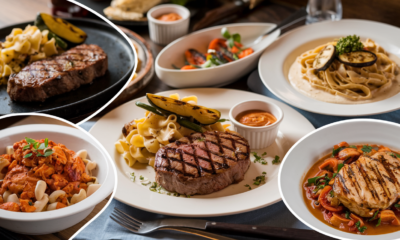
 Pasta Recipes10 months ago
Pasta Recipes10 months ago5 Delicious Steak and Pasta Recipes
-
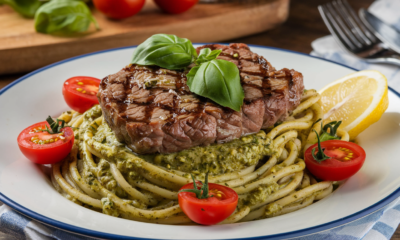
 Pasta Recipes10 months ago
Pasta Recipes10 months agoDelicious & Delightful Steak and Pesto Linguine Recipe
-
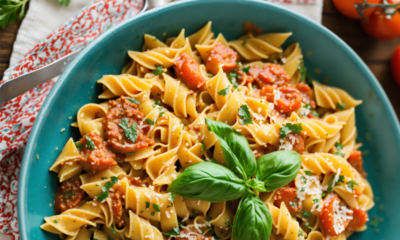
 Pasta Recipes10 months ago
Pasta Recipes10 months agoSwirly Pasta Recipe: Creative, Fun, and Delicious
-
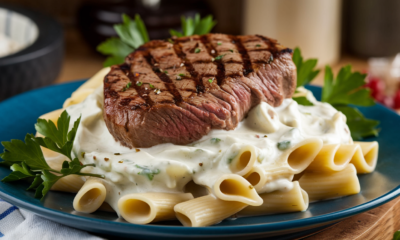
 Pasta Recipes10 months ago
Pasta Recipes10 months agoDelicious & Creamy Steak Alfredo Recipe
-

 Pasta Recipes10 months ago
Pasta Recipes10 months agoBrown Rice Pasta Recipe: A Healthy, Gluten-Free Alternative
-
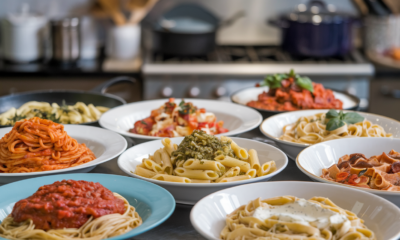
 Pasta Recipes10 months ago
Pasta Recipes10 months ago10 Easy Pasta Recipes for Busy Weeknights
-

 Pasta Recipes10 months ago
Pasta Recipes10 months agoSacchetti Pasta Recipe: Little Pouches of Flavor to Impress








